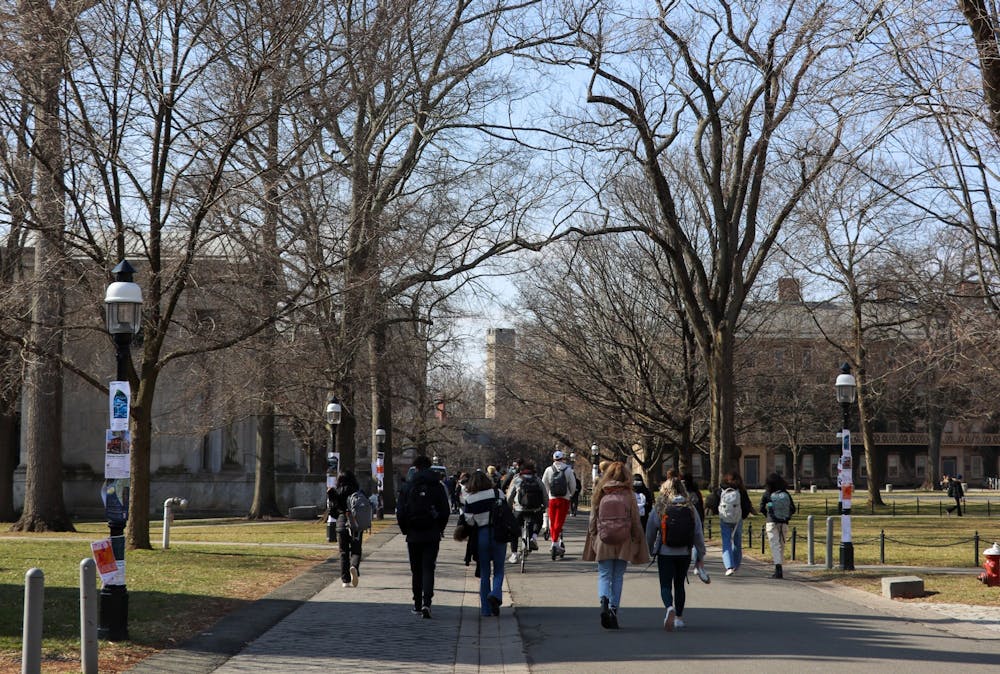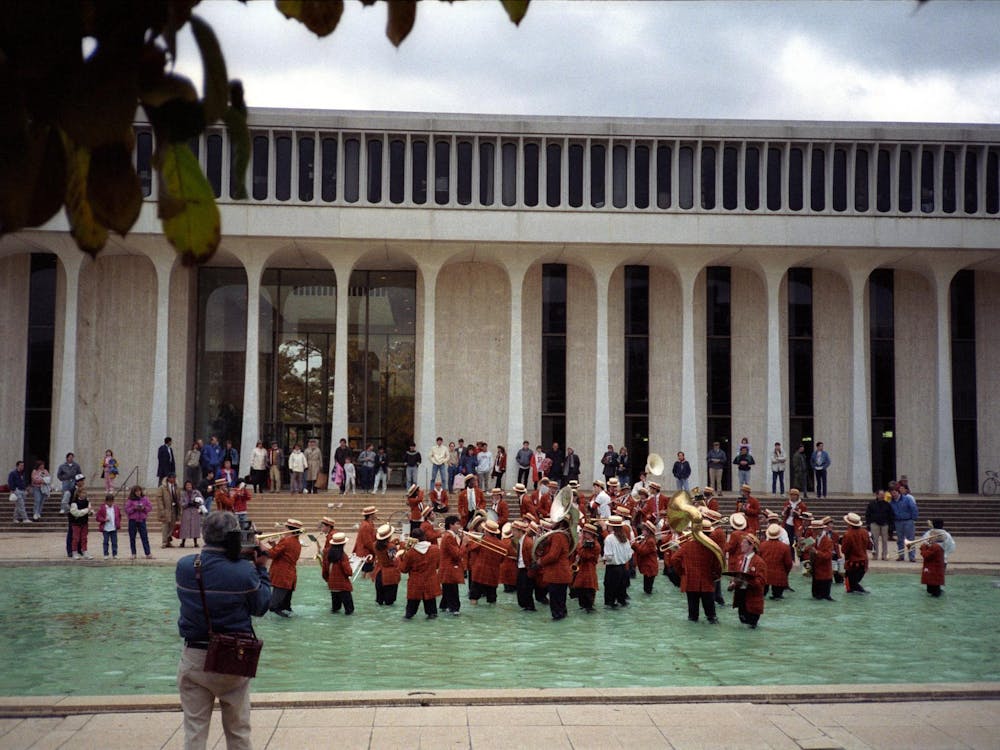On March 11, 2020, the day of the “end of the world,” Camille Reeves ’23 was taking a midterm exam. Apart from the sound of papers rustling and students ferociously scribbling, the room was silent. Then, the pings started. Notification after notification, phones tucked away in backpacks began to sound, echoing through the exam room.
The day prior, many of the University’s peer institutions, including Harvard and Yale had announced that undergraduates would have to vacate campus due to the threat that the surging COVID-19 pandemic posed to students. Against this backdrop, the pings were a harbinger of disaster.
“I knew something COVID-related was happening,” Reeves said.
When she turned her phone back on after the exam, the notifications loaded so fast she couldn’t read them.
“I knew it was over,” she said. In response to the pandemic, undergraduate students were being told to leave Princeton’s campus as soon as possible. She packed up her dorm and left that Saturday, March 14, not knowing when she’d return.
What did campus look like between Wednesday, March 11, and her flight home? Reeves described it as “a full-on Bacchanalia.”
The threat of being kicked off campus had loomed over the heads of students in the days leading up to the announcement.
Myles McKnight ’23 noted how even though other colleges had been sending students home because of the pandemic, “some people had this denialist hope that Princeton would be different.”
On March 8, a few days before the March 11 notification to leave campus, an announcement had accidentally been released on the University website saying that students wouldn’t return to campus for an extra week after Spring Break. It was deleted within a few hours.
On the morning of Monday, March 9, Eisgruber announced that courses would temporarily be virtual after spring break and encouraged students to stay home for longer. In the afternoon, the University published new “social distancing” policies. In the midst of these announcements, life was continuing as always on campus, with students crammed elbow-to-elbow in libraries studying for ongoing midterm exams and dining halls full of chatter.
Signs of imminent change were in the air though, with the country rapidly confronted with the threat of the pandemic. Front pages were filled with coronavirus news, from Italy’s recently-initiated lockdown to President Trump’s reaction. Cases were rising across the United States, and nearby New York had over a hundred cases already. New Jersey Governor Phil Murphy declared a state of emergency that Monday night.
“Everything had this sort of apocalyptic filter almost to it,” McKnight said.

Then, at 7:46 p.m. on the evening of March 11, the announcement came that undergraduates were to return home and stay there for the rest of the semester.
“It was total anarchy,” McKnight said. “People were partying like crazy.”
With the future uncertain, students tried to make the most of their last few days of normalcy. They played die, a popular drinking game, in Henry courtyard and packed into dorm suites.
“It looked like lawnparties,” Reeves said. “Except with suitcases, people packing up and leaving.”
Students scrambled to make arrangements, with many storing boxes at the houses of friends and acquaintances.
Reeves had a flight on Saturday morning, which gave her just two days to pack up her entire dorm and figure out storage plans for an undisclosed amount of time.
“What do we do with all our stuff?” was one of the first questions Lizzie Curran ’23 — a native of the United Kingdom — had when the announcement dropped.
“We had to pack up all our dorm stuff and get out,” McKnight recalled. His parents were able to drive up from North Carolina and help.
Within a few days, the campus had emptied out.
McKnight remembers the days before leaving, calling it surreal, “like a haze.”
For the most part, the virus hadn’t yet reached the Orange Bubble, though there were signs of that changing as well. The day after the announcement, on Thursday, March 12, an undergraduate student tested positive and was placed in isolation at the McCosh Health Center, exhibiting flu-like symptoms. The next day, a staff member tested positive for the virus.
As a result, the University began emphasizing social distancing, which was a new concept to many.
The Office of the Dean of Undergraduate Students sent an email on Friday, March 13, stating that there could be disciplinary consequences for large gatherings. This marked the beginning of a nearly one-and-a-half-year era of the University restricting social gatherings amongst undergraduates. The email said that the Department of Public Safety could document these gatherings and students who refused to disperse could be arrested.
The email referred to “disruptions we have seen on campus in the past two days” and said, “so many students are failing to heed these protective measures and engaging in disruptive behavior.”
Regardless, students continued to gather. Dining halls were still open, and enforcement of social distancing was lax. Reeves remembers music blasting everywhere and handles of vodka left outside for the taking.
“It was one last chance to be a college kid before everything got completely destroyed,” McKnight said. “A lot of nobody going to class, just people hanging out, almost as though the world were ending tomorrow and there was nothing you could do about it.”
“There was an incredible sense of community but it was overwhelmed by sadness,” Reeves recalled. No one knew when they’d be allowed to return to campus.
The campus remained vacant through the end of the year, with just a few students with permission to live in the dorms in the fall of 2020 for reasons like housing insecurity. The following spring, a larger percentage of students arrived at a changed and stifled campus environment, with strict limitations on social gatherings, masking policies, and take-out dining hall food.
Ultimately, campus life resumed more fully that fall, with most classes meeting once again in-person and almost everyone back in the dorms. It had been a year and a half since Reeves had left, in the middle of her freshman spring; by fall 2021, she was a junior, finally reunited with many classmates she hadn’t seen since that frenzied week in March.
She remembers that first week of her junior year as similar, in a sense, to that final week in March: Everywhere people were hugging and celebrating the joy of being together. Except for this time, it wasn’t a goodbye.
“That fall was like a big reunion,” she said. “It was special.”
Paige Cromley is a junior who serves as head Features editor. She also writes for the News and Prospect sections of the ‘Prince.’
Please direct any correction requests to corrections[at]dailyprincetonian.com.








